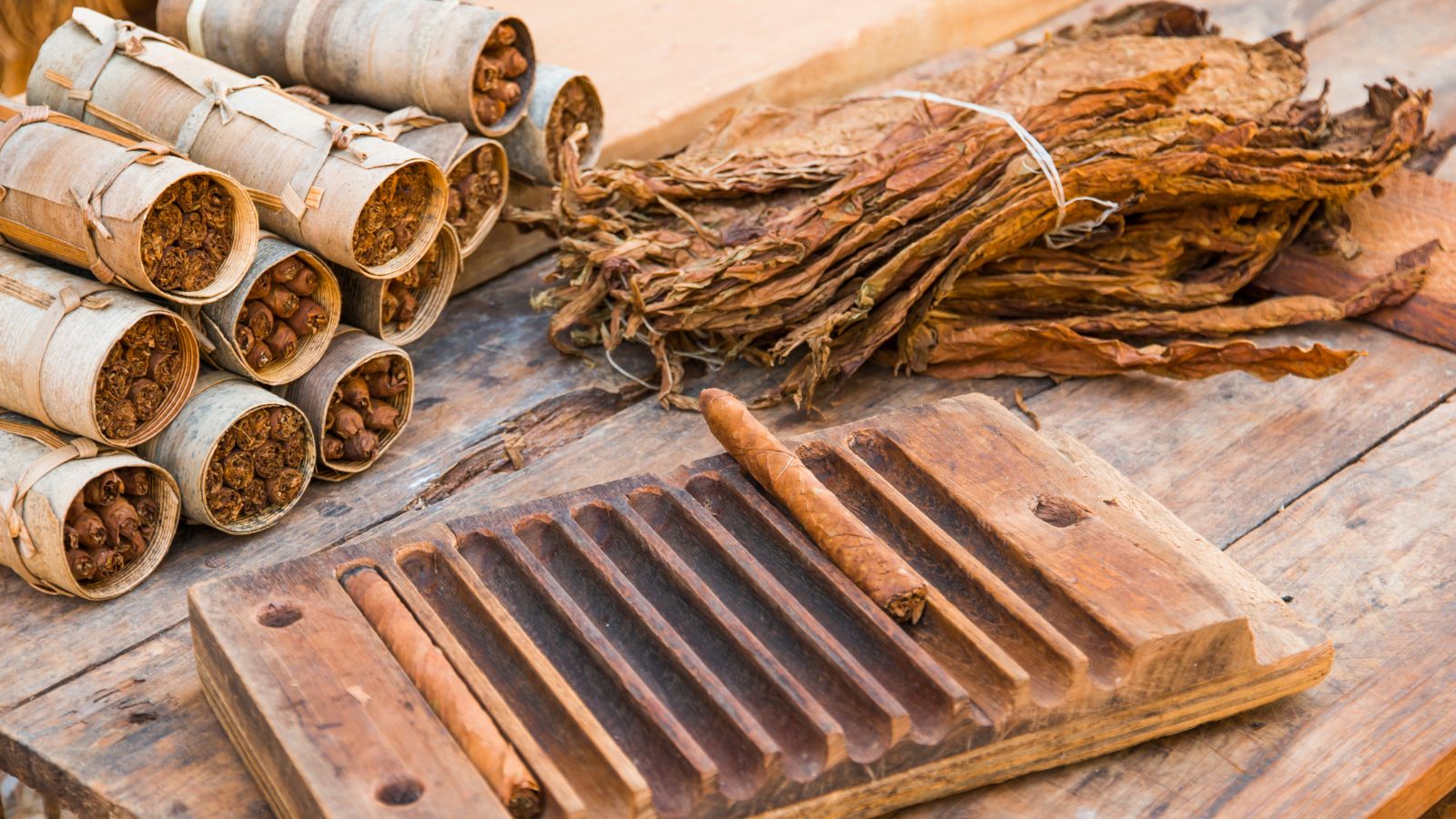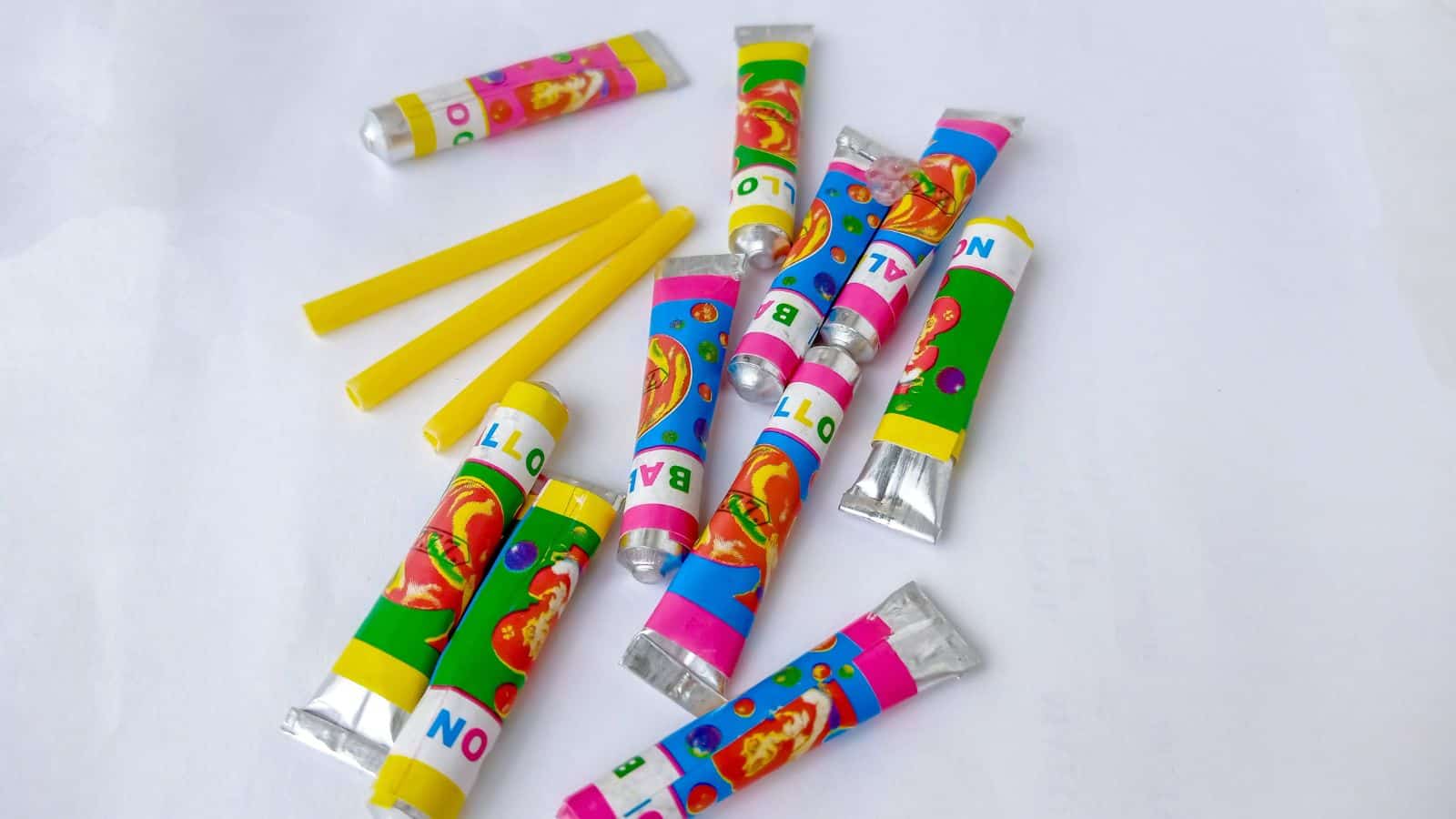You could probably get Star Wars toys, nerf balls, and moon boots from the 1970s today. However, this can’t be said for some other things. From sweets to luxury delicacies and toys, here are 17 things that were popular in the 1970s but are now prohibited.
Candy Cigarettes

The 1970s had Viceroy, Chesterfield, and Target—candy cigarettes that were a popular delight among children. If they couldn’t get the real thing, at least they could get something similar that also tastes good. In 2009, however, the FDA banned the production of these, as they encouraged smoking among young people, as this NCBI research shows.
Chemistry Sets

Chemistry sets, which came with a mix of chemicals, test tubes, flasks, and burners, were one of the coolest gifts a child could receive. People especially enjoyed making stink bombs with them. Today, sets with dangerous chemicals like potassium nitrates, copper sulfate, and iodine are banned.
Fireworks With Heavy Metals

During the new year, you probably blasted some fireworks into the sky and didn’t have the police knocking at your door. They’re generally legal. But when it comes to the ‘70s-popular fireworks made with lead, titanium, and copper, you haven’t been allowed to use them in Hawai’i since 2012.
Beluga Caviar

The beluga and sevruga caviars were luxury delicacies in the ‘70s, going for about $80 per 14 ounces—equivalent to $630 today. You may want to have a taste, but the import of beluga caviar has been banned since 2005 due to efforts by the Fish and Wildlife Service (FWS) to protect the wild sturgeon.
Playing on Train Tracks

To a lot of people, empty tracks are perfect to reenact their favorite movie scenes or just have the utter freedom to play. Well, you could do this in the ’70s, but not today. The Federal Railroad Administration notes that being on train tracks is a form of trespass made illegal to avoid deaths and the destruction of property.
Flame Retardants

Like today, people in the ‘70s loved their furniture. Flame retardants like Tris and PBCs were used to reduce the flammability of mattresses, foams, carpets, coverings, and even pajamas. Due to their toxicity to adults, children, and animals, The Guardian reports that they have been banned in the U.S. since 1979.
Clackers

The fun with clackers basically involved knocking together two balls on a string as fast as you could. The danger, sadly, was that these balls were made of tempered glass, were prone to shattering, and sent over 6,000 people to the hospital. Production was restricted in 1971, and they were eventually banned in 1988.
Toy Guns

Replica firearms were also a thing. You could have all the benefits of looking cool with that pistol without the dangers that come with it. Since 1988, however, the manufacture and sale of toy guns have been banned, except when they have an orange tip or come in a completely different, bright color.
Advertising Tobacco Products

Cigarettes and other tobacco products were so ingrained in American culture that they were allowed almost everywhere. It was normal to see them advertised on TV, given how much people loved them. A ban on these came into effect as early as 1971.
Smoking on Airplanes

Smoking some tobacco while flying through time zones was so popular that airplanes had designated smoking sections. However, this act also posed serious fire risks when smoke entered the vents or cigarettes were thrown in dustbins. Although there were back and forths in prohibition, the final and comprehensive ban came in 2000, according to Business Insider.
Metal Playgrounds

For both children and adults, playgrounds were fun to be at. Steel seesaws, swings, slides, and merry-go-rounds gave some of the best memories from the ‘70s. Today, they have been banned due to the dangers they pose. Steel slides, for instance, are banned due to the third-degree burns they cause on a hot day, as T.F. Harper says.
Lead-Based Paint

If you wanted to give your house that beautiful pop, you probably used lead-based paint. Lead-based paint was so popular given that it was cheaper, you could clean it, and it lasted longer. It sadly also posed the risks of high blood pressure and diminished motor skills, leading to their ban in 1978.
Lawn Darts

With steel-tipped darts thrown into plastic circles, the game of lawn darts was a blast for many. Sadly, the darts were strong enough to pierce through skin and even skulls when thrown with a lot of force. Hence, the CPSC banned them in 1988.
Super Elastic Bubble Plastics

Who knew blowing a balloon could be dangerous? Super-elastic bubble plastics were thin, goo-like rubbers that children blew into very large balls. The problem with them was that they had chemicals that caused dizziness, hallucinations, and muscle twitches. Today, they are banned in places like Canada and Australia and restricted in the U.S.
Trans Fats

Trans fats were basically oils with hydrogen added to them to make manufacturing less expensive. They also had a longer shelf life as they solidified at room temperature. Healthline reports that the FDA banned them in 2020, as they presented risks of heart attacks, strokes, and type 2 diabetes.
Plastic Microbeads

Many people in the 1970s didn’t realize the makeup they applied could kill them. Plastic microbeads were included in rinse-off cosmetics to serve as exfoliating agents. However, they could trigger immune responses and local particle toxicity and, hence, have been banned since 2015.
Asbestos

Asbestos was the go-to option for roofing new homes in the 1970s, as it was fire-resistant and lasted longer than others. Sadly, research from even the 1930s showed exposure to them caused lung, ovary, and larynx cancer. Although they haven’t been completely banned, their use has been greatly restricted since the 1980s.
Read More: Why People Aren’t Religious Anymore: 15 Simple Reasons

As society evolves, so does our approach to spirituality. This article looks at the subtle yet profound shift from traditional religious adherence to a more personal, evidence-based belief system.
Why People Aren’t Religious Anymore: 15 Simple Reasons
17 American Attractions That Not Even Americans Want to Visit

The United States of America—land of the free, home of the brave, and the location of some of the most ‘unique’ tourist attractions you’ll ever lay eyes on.
Get ready to chuckle, scratch your head, and maybe even facepalm as we look at 17 American attractions that not even Americans think are worth visiting.
17 American Attractions That Not Even Americans Want to Visit
17 Fairy Tales That Are Now Considered Racist

While fairy tales weave magical narratives that span generations, many emerge from historical and cultural contexts tinged with biases. Hiding in many of these tales, racial undertones can be found. Let’s look at 17 fairy tales that have deeper implications.
